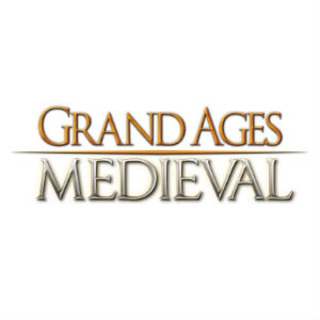Following in the footsteps of such games as Port Royale and Patrician, Grand Ages: Medieval, developed by Gaming Mind Studio is a game about global conquest, however, the focus is on conquest through economic expansion and trading, rather than military force. In this way, Grand Ages: Medieval is a totally different animal than most games that emphasize world conquest.
Developing your empire means economic investments into businesses and the specialization into a wide variety of goods. You can also hire merchants, set up trade routes to different settlements across the map, and eventually establishing a military force. Your overall progression in the game’s story is based around the meeting of deadlines associated with these and other tasks and the accomplishments of specific objectives relating to your empire, which are set by an NPC.
The implementation of a functional economy through trade, the construction and maintenance of new settlements, and forging agreements and alliances are some of the primary focuses of the game, rather than conquest through military means. This can be seen in the over simplified combat system, and that fact that most of the emphasis is placed on the balance of your overall production and consumption of goods, the ultimate goal here is to turn a hefty profit. Thankfully the system is actually satisfying to manage, for micromanaging fans.
The game features 20 different resources to develop, so experimentation with various assets is key, as well as researching new technologies which can improve the rate and yield of your means of production.
The world map consists of Europe, North Africa, the Caucasus, and the Middle East, albeit in a condensed format. At the start of a new game, only European cities will be accessible, with more distant lands obscured by a fog of war. The fog can be cleared, of course, by sending scouts and settlers out into the world in an effort to discover new areas. Sadly, all the towns and settlements that you encounter throughout the game are pretty similar in appearance, and have little individuality between them aside from the ethnicity of their leader and the goods they can produce.
The ability to explore caves on the world map and discover commodities adds an interesting diversion to your empire building, allowing you to pick up additional goods and add a few extra coins to your coffers.
Adding to the single player mode is a multiplayer component, allowing you the opportunity of playing with up to eight players. Multiplayer sessions give you the chance to attack your friends or aid in the development of their towns.
The single player campaign is designed to be as user friendly as possible, yet it doesn’t really succeed in this regard. The campaign itself is basically one huge tutorial with the sole purpose of showing new players all the ins and outs of playing the game. This is admirable, however, the tutorial itself is a bit too unstructured for its own good, making it possible to dig yourself into a deep pit, financially, that isn’t easy to climb out of. Adding to this is a busy screen that features the managerial options of several towns at once, and you have a recipe for confusion.
Historically, massive scale strategy games haven’t been terribly beginner friendly, and one could argue that its less about this particular game and more about the genre itself, which tends to have so many options available that its easy for newcomers to feel overwhelmed and its nice that the developer tried to make it more accessible even if it didn’t work out entirely as planned.
The marketplace mechanics that drive the game are at least fairly interesting. The establishment of various trade routes and distribution of goods works well, and makes for a functional and somewhat robust economic system that rewards players for the production of a variety of different types of goods in many different towns.
Combat itself is pretty subpar, most of the frustration comes with not having enough control over the action. While this is by design, it doesn’t make for a fun or compelling gameplay experience. This makes conquering your neighbors more of a challenging endeavor than it should be, and many players may find themselves opting for acquisition through non combative business deals and complete financial takeovers.
Its interesting that the game almost recognizes that its own combat systems and mechanics are lackluster and so it gives you alternate ways of increasing your influence and spreading your empire. It would be nice if the combat systems were better but at least they aren’t a key component of the game, allowing you to focus your attentions elsewhere.
Once players complete the lengthy tutorial that serves as an extended introduction to the game, they’ll be able to jump into the core of the game. This involves playing open games, or customizable games featuring 1 to 8 players and starting in any city in the game.
You can elect to play a shorter game and just conquer a smaller portion of the world, rather than complete world domination. Longer games are quite a time sink, and will have you playing for days, rather than hours.
Once you get used to the gameplay mechanics, the core game is solid, however, the lack of a variety of scenarios, either historically or geographically based would have gone a long way towards adding much needed content.
While the appeal is definitely aimed at a niche audience that enjoys the micromanagement of economic and trading systems, more casual players might find an interesting, if flawed diversion. While the combat doesn’t come close to franchises such as Total War, and the city management is nowhere near the level of franchises such as Civilization, yet as a solid effort, it still manages to carve out its own section of the strategy genre.

